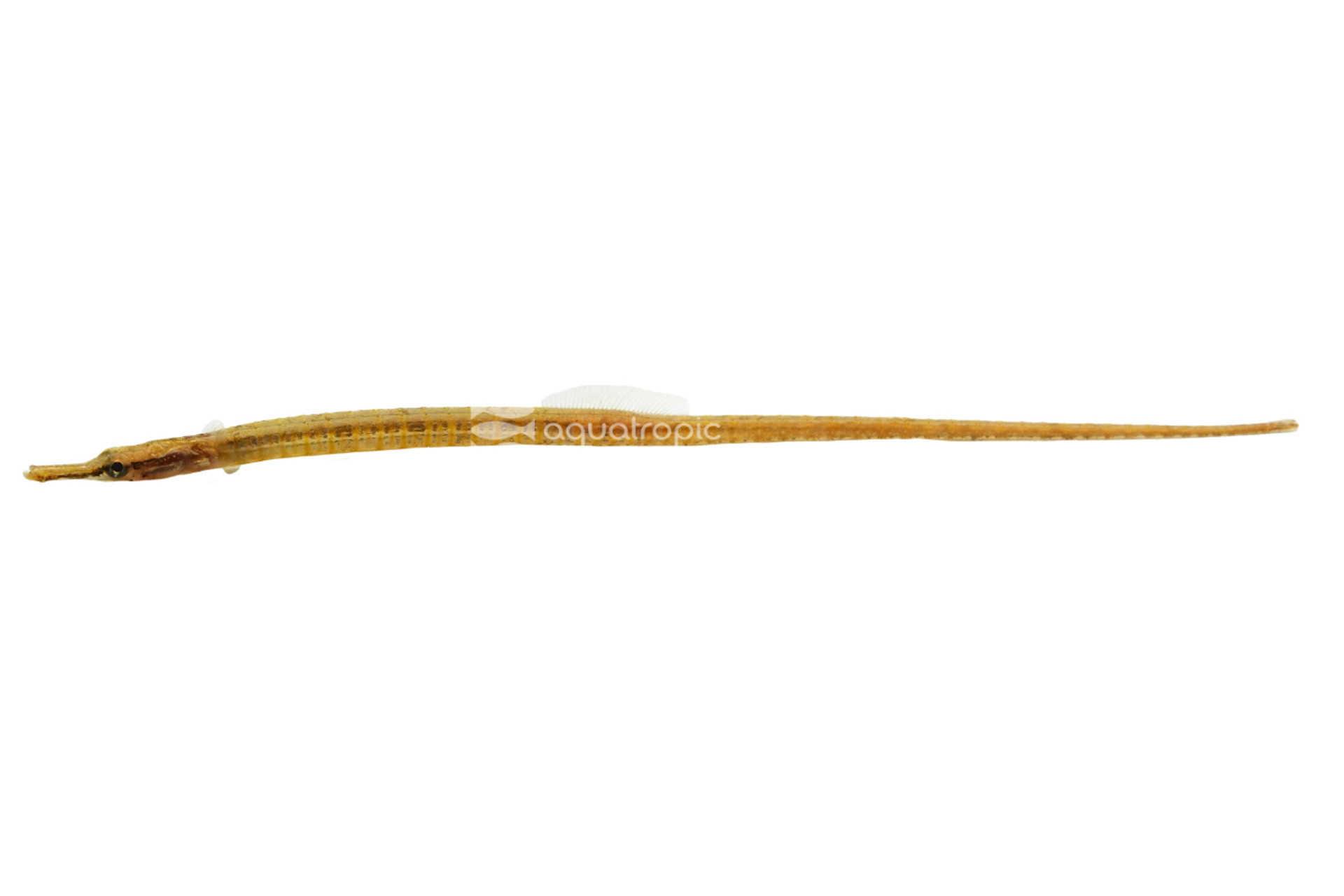Freshwater Pipefish? Yes, Please!

We all love an Oddball fish because aquariums that have something in them that you haven't seen before are always wildly fascinating. Some of the cooler Oddballs on the Marine side belong to the Seahorse and Pipefish group, but even though there are hundreds of species of freshwater pipefish, we see very few of them on the sweet water side of things, which is, alas, a great shame.
But wait, what's this? Doryichthys deltoides to the rescue?!? Indeed, for those of you who have been searching for a freshwater option and have some experience keeping aquariums, we're here to educate you on the Dwarf River Pipefish, sometimes called the Long Snout(ed) Pipefish and how best to make a display for them! We say “them” intentionally, you should always keep these unique fish in pairs at a minimum, and groups of three to seven are even better.
Doryichthys deltoides hail from Southeast Asia, notably the Mekong basin, the Malay Peninsula, and Indonesia. There they are usually found in rivers and by waters that are marked with very slow current and lots of branchy cover, with abundant aquatic and riparian (the line between water and land) vegetation. They are social creatures are often found in groups. Like Seahorses, the male carries eggs in a brood pouch which is found under the tail of the fish.
Any display for Dwarf River pipefish needs to take this wild habitat into account. The tank size should be as small as possible, and this seems counter intuitive, but these fish are very slow moving, and live a sedate lifestyle. Smaller tanks will aid in making it easier to get them enough food, a topic we'll get into in more depth shortly. These Pipefish usually don't get much bigger than five to six inches long. With this in mind, you could keep a pair in a tank as small as 10 gallons and a small group in 20 gallons. While they don't need any substrate per say, they are perfect candidates for planted aquariums for a variety of reasons (and you'll need some substrate for that type of display anyway); they'll also love a lot of smooth wood with thin branches to hold onto like the Wood Root, or Flooded Forest products from Ecoscape.
https://www.qualitymarine.com/ecoscape/wood-series...
Flow should be very sedate, but the water needs to be clean. Sponge filters are ideal in these displays as they prevent food from getting sucked up into the filter and offer a very diffuse flow. If you want to use other filtration like hang-on-back or canister, make sure the flow through the tank is gentle and not more than 2x per hour. Aquarists looking to keep Dwarf River Pipefish should expect to do regular water changes in addition to their normal filtration to maintain the good water quality these fish will do best in. These are tropical fish and will need a very stable temperature between 72- and 78-degrees Fahrenheit. The pH should be between 6.0 and 7.5, while the hardness is of less importance, their wild environment is usually somewhere between 2 and 12 degrees.
Almost all of the husbandry aspects of Doryichthys deltoides thus far have been pretty straightforward and easy to accommodate. At this point, some of you may be wondering why we only recommend these fish for advanced hobbyists. The answer is feeding. These fish are difficult to feed anything but live food. We have seen some individuals learn to take frozen foods, but some will need to be fed live food for an extended period of time before they come to accept frozen food. They do well when fed live Brine and Brine Nauplii, both of which can be sourced live as a Nutramar product from Aquatropic partner stores. They will also take live daphnia and tubifex. All of these foods, including the Brine can be raised at home and we have articles for raising all of them here on the website as part of our Homegrown Food series of articles. They will also eat fish fry, and some aquarists also feed them baby guppies with good success (which are also easily reared by the home hobbyist). These fish will greedily take the babies of ornamental shrimp, which will also breed of their own accord in appropriate displays. To this end, many people will keep Dwarf Pipefish with Amano or Cherry Shrimp, which given a good environment will reproduce, thus producing a viable supply of food for the fish, while the adults largely stay too big to be on the menu. Our earlier suggestion for the use of sponge filters can also aid in feeding, as the live foods will get stuck on the filter sponge to get picked off rather than getting sucked up into a filter unit to plug it prematurely. Long story short, someone interested in keeping these fish should be prepared to offer them live food for an extended duration, and for some of you who live far from your LFS, it may mean rearing some of this food yourselves. Many hobbyists enjoy this part of the aquarium hobby, and perhaps you will too, or maybe do already!
The Dwarf River Pipefish we are currently offering are sustainably wild collected. Occasionally you will see them for sale as aquacultured specimens and these fish are almost always the results of local home aquarists breeding them successfully, which is (obviously) possible for you if you're up to the challenge; for those of you who are, a wide-open market for them awaits you! If you are this kind of hobbyist, and you find yourself intrigued with the idea of keeping a few of freshwater's coolest oddball fish, head over to your Local Fish Store and ask them about getting you some Doryichthys deltoides from Aquatropic today!